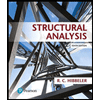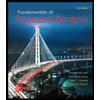5 set of sieves are to be used for analysis of aggregates. After sieve shaking the sieves, the mass of aggregates that retained on the 1" sieve is 50.26% of the total mass of the sample and the mass of aggregates that retained on the 2nd sieve is 20.26% of the total mass. The mass of the aggregates that passed through the 3rd sieve and 4th sieve is 42.81% and 8.628%, respectively, of the difference of the mass of aggregates that retained on the 1* and 2nd sieve. The mass of aggregates on the pan is 0.4105% of the total mass of the sample – which is 2.6 kg. Complete the table on the worksheet provided and round off to two decimal places.
5 set of sieves are to be used for analysis of aggregates. After sieve shaking the sieves, the mass of aggregates that retained on the 1" sieve is 50.26% of the total mass of the sample and the mass of aggregates that retained on the 2nd sieve is 20.26% of the total mass. The mass of the aggregates that passed through the 3rd sieve and 4th sieve is 42.81% and 8.628%, respectively, of the difference of the mass of aggregates that retained on the 1* and 2nd sieve. The mass of aggregates on the pan is 0.4105% of the total mass of the sample – which is 2.6 kg. Complete the table on the worksheet provided and round off to two decimal places.
Chapter2: Loads On Structures
Section: Chapter Questions
Problem 1P
Related questions
Question

Transcribed Image Text:ANALYTIC APPROACH IN AGGREGATES
5 set of sieves are to be used for analysis of aggregates. After sieve shaking the sieves, the mass of
aggregates that retained on the 1st sieve is 50.26% of the total mass of the sample and the mass of
aggregates that retained on the 2nd sieve is 20.26% of the total mass. The mass of the aggregates that
passed through the 3rd sieve and 4th sieve is 42.81% and 8.628%, respectively, of the difference of the
mass of aggregates that retained on the 1" and 2nd sieve. The mass of aggregates on the pan is 0.4105%
of the total mass of the sample – which is 2.6 kg. Complete the table on the worksheet provided and
round off to two decimal places.
Expert Solution
This question has been solved!
Explore an expertly crafted, step-by-step solution for a thorough understanding of key concepts.
Step by step
Solved in 2 steps with 2 images

Knowledge Booster
Learn more about
Need a deep-dive on the concept behind this application? Look no further. Learn more about this topic, civil-engineering and related others by exploring similar questions and additional content below.Recommended textbooks for you


Structural Analysis (10th Edition)
Civil Engineering
ISBN:
9780134610672
Author:
Russell C. Hibbeler
Publisher:
PEARSON

Principles of Foundation Engineering (MindTap Cou…
Civil Engineering
ISBN:
9781337705028
Author:
Braja M. Das, Nagaratnam Sivakugan
Publisher:
Cengage Learning


Structural Analysis (10th Edition)
Civil Engineering
ISBN:
9780134610672
Author:
Russell C. Hibbeler
Publisher:
PEARSON

Principles of Foundation Engineering (MindTap Cou…
Civil Engineering
ISBN:
9781337705028
Author:
Braja M. Das, Nagaratnam Sivakugan
Publisher:
Cengage Learning

Fundamentals of Structural Analysis
Civil Engineering
ISBN:
9780073398006
Author:
Kenneth M. Leet Emeritus, Chia-Ming Uang, Joel Lanning
Publisher:
McGraw-Hill Education


Traffic and Highway Engineering
Civil Engineering
ISBN:
9781305156241
Author:
Garber, Nicholas J.
Publisher:
Cengage Learning